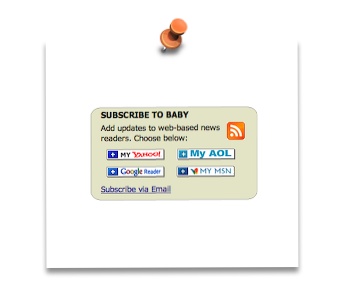 Get ready for colds, the flu, RSV, stomach virus and all sorts of nasty things to come your little one’s way. Naturally, prevention is the best thing of all, but no matter what you do sometimes you baby gets sick anyway. When that happens, it is important to follow the directions of your pediatrician carefully and double check all medications that will be given to your child.
Get ready for colds, the flu, RSV, stomach virus and all sorts of nasty things to come your little one’s way. Naturally, prevention is the best thing of all, but no matter what you do sometimes you baby gets sick anyway. When that happens, it is important to follow the directions of your pediatrician carefully and double check all medications that will be given to your child.
The two previous posts, I covered some tips, guidelines and cautions about using medication safely for a baby or young child. If you missed those posts, you can click here: How to Use Medication Safely and More Ways to Use Medication Safely.
Now, I’ll share with you my final tips about medication and little ones.
Before grabbing something over the counter to make your child feel better, a quick call to the pediatrician’s office is in order. The doctor may want to see your child or have a specify recommendation for medication.
When you receive your new prescription at the pharmacy, double check with the pharmacist, asking what the medication is commonly used for. I caught an error one time in how the prescription was filled when I was given the wrong cream for my child’s skin rash.
You can also read the label and inserts of the medication carefully to make yourself aware of exactly what the medication does and if there are any side effects.
After giving your child medication, be on the alert for any possible allergic reactions, such as hives, itching, swelling, vomiting or trouble breathing.
Never combine two or more different medications, unless your pediatrician okays it. Over the counter medications and prescriptions can interact or cause an overdose.
Sometimes dosage can be confusing, especially when it is abbreviated. Print out this list for measurement abbreviations and place it on the inside door of your medicine cabinet or other obvious place.
Tbsp or T is a Tablespoon, the equivalent of 15 ml
Tsp or t is a teaspoon, the equivalent of 5 ml
Oz is an ounce, the equivalent of 30 ml
ml is a milliliter, and the measurement that doctors usually use when writing prescriptions for liquid medication for children
mg is a milligram and used as a weight measurement.
Click here for more articles by Mary Ann Romans.
New Children’s Vitamin D Recommendation May Require Supplements
Fans May Reduce the Risk of Sudden Infant Death
Link Between Second-Hand Smoke and Allergies
 Are you subscribed to the Families.com Baby Blog? With the click of a button, you can receive an email notification anytime a new blog is posted in the Families.com Baby Blog!
Are you subscribed to the Families.com Baby Blog? With the click of a button, you can receive an email notification anytime a new blog is posted in the Families.com Baby Blog!
Just look to the right of this blog and find the subscription center (it looks just like this picture, although you’ll have to find the “real” one just above the category listing ). Click on “Subscribe via Email”. You’ll be instantly subscribed and the email address that you registered at Families.com with will receive an instant notification whenever we post a new Baby Blog! Don’t miss a thing – subscribe now!

